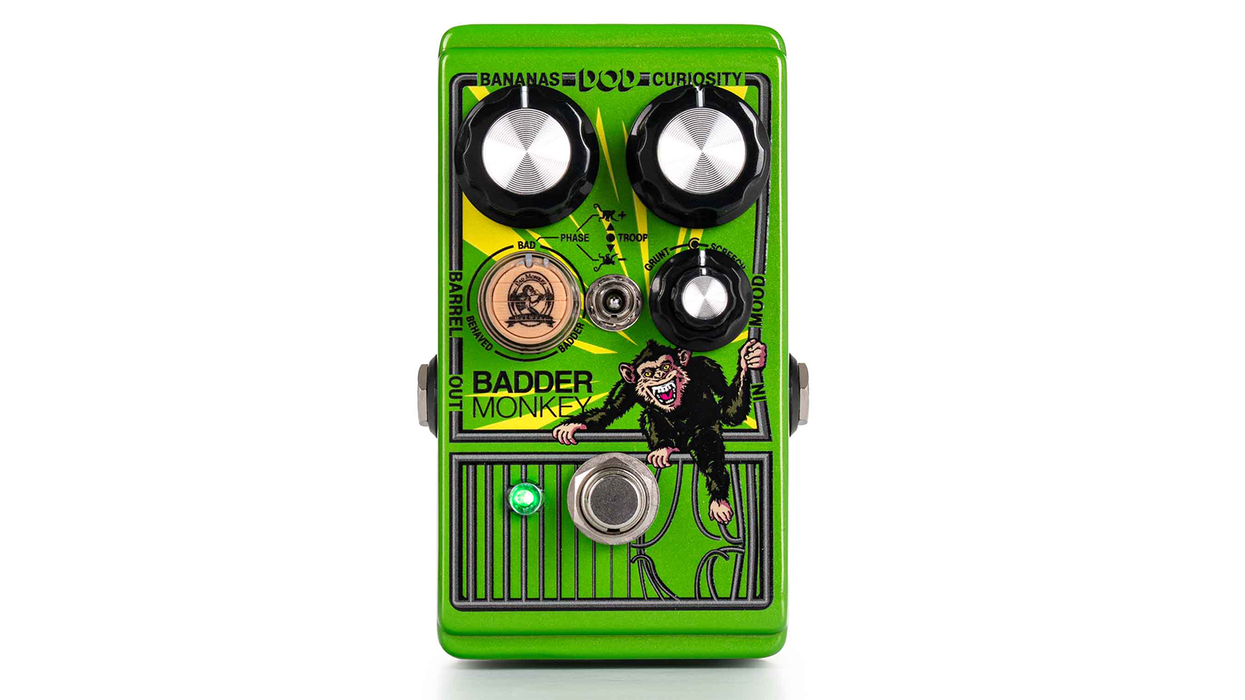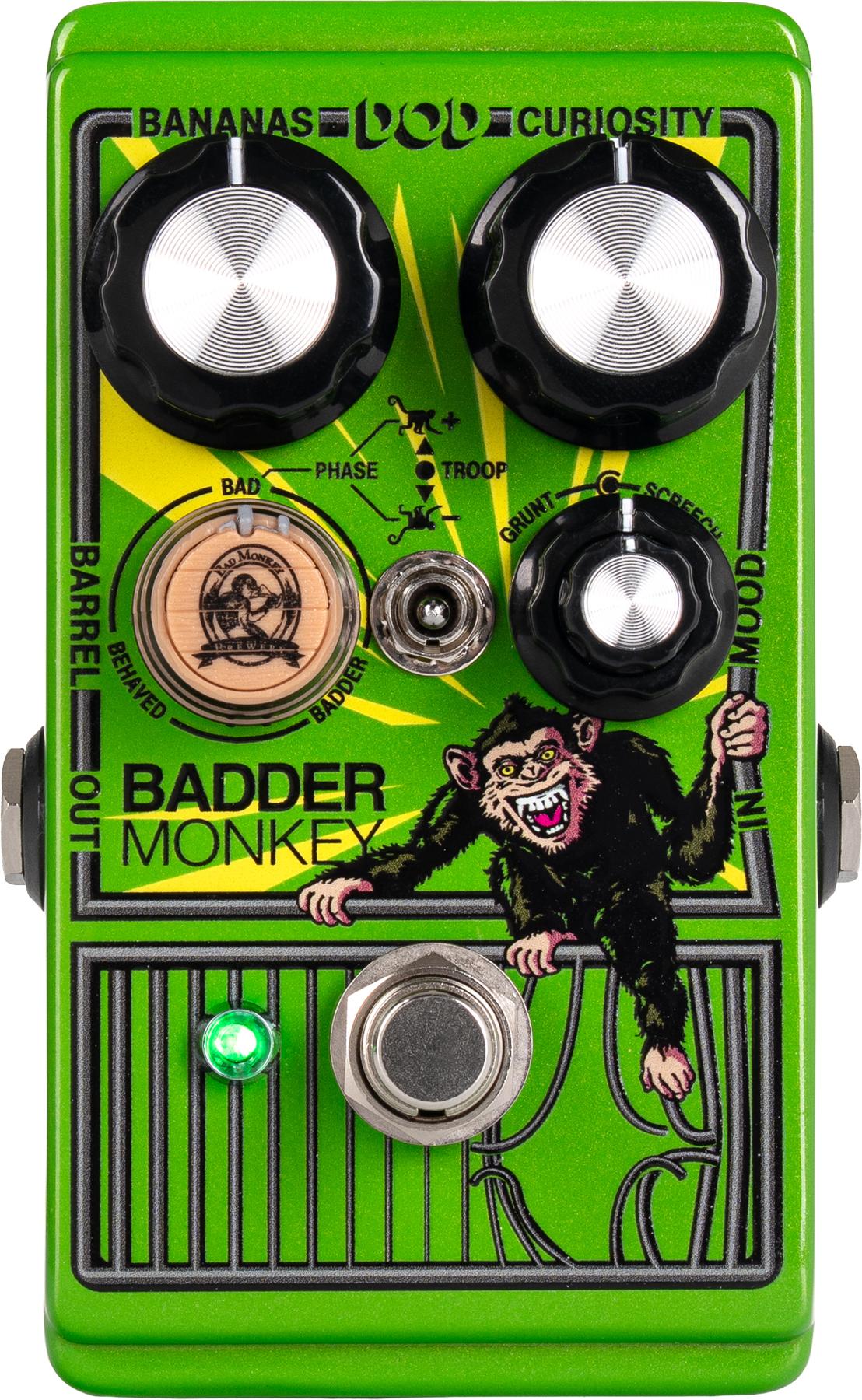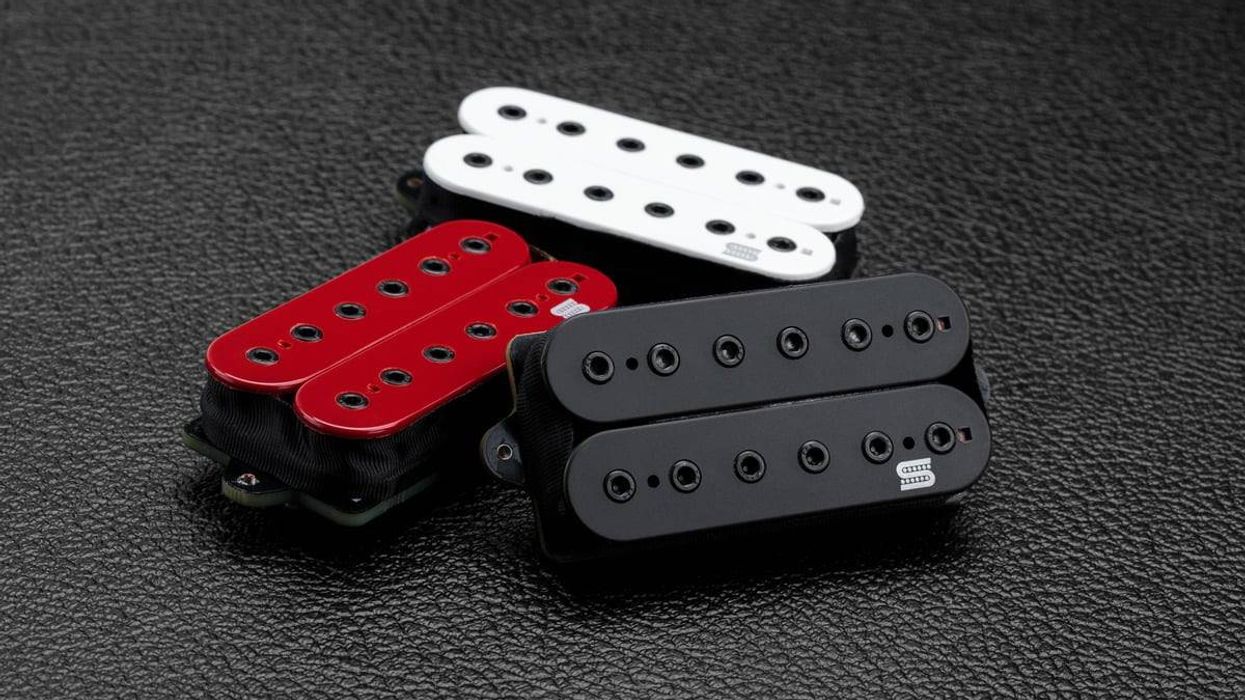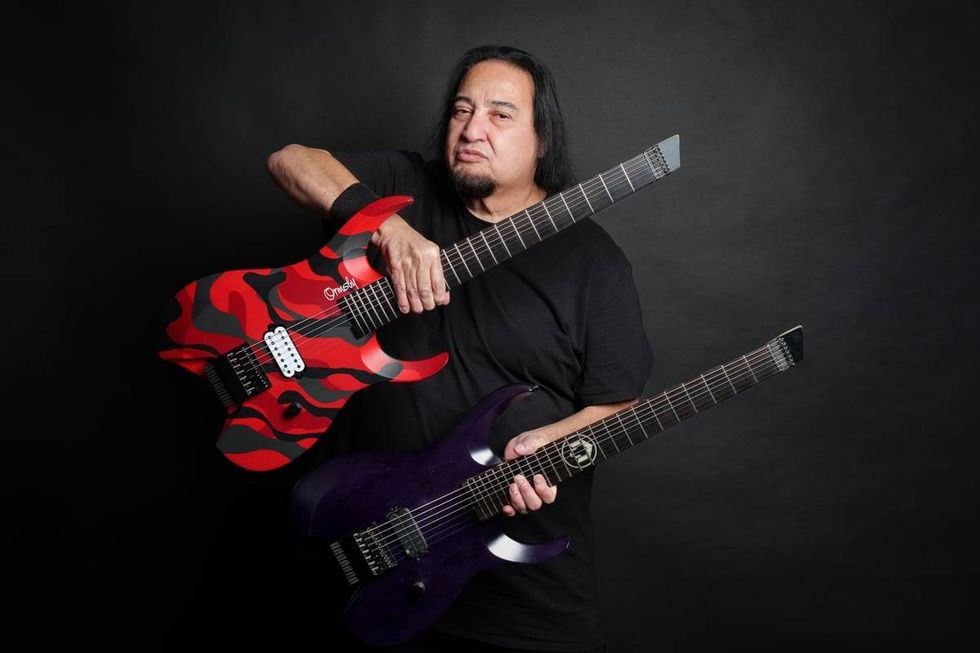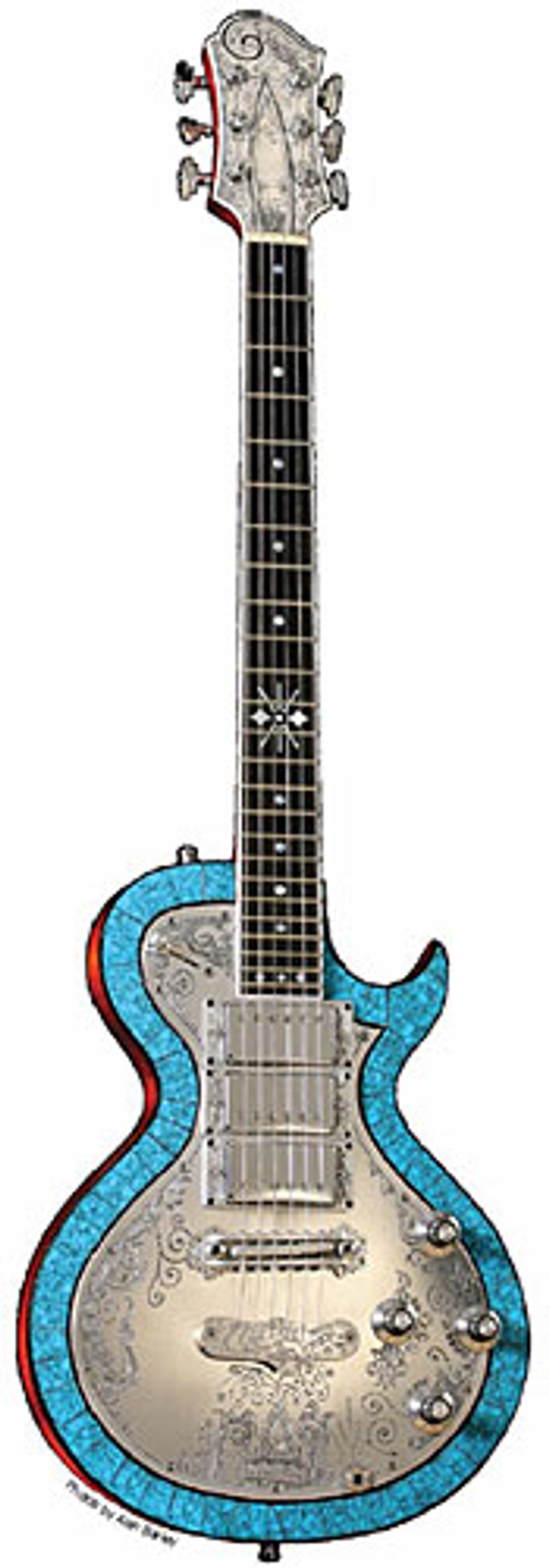 When I first opened the box and
unpacked this beautiful guitar for review,
I was pleasantly surprised. My first
thought – as I am sure others might
concur – was, “Wow, it looks like a
Zemaitis.” Turns out, I wasn’t far from
wrong, as builder Teye says he was
inspired to build in this style because of
his love for Zemaitis guitars, of which he
owns several. However, there are some
significant differences between the two,
as I discovered upon stepping into the
review chamber.
When I first opened the box and
unpacked this beautiful guitar for review,
I was pleasantly surprised. My first
thought – as I am sure others might
concur – was, “Wow, it looks like a
Zemaitis.” Turns out, I wasn’t far from
wrong, as builder Teye says he was
inspired to build in this style because of
his love for Zemaitis guitars, of which he
owns several. However, there are some
significant differences between the two,
as I discovered upon stepping into the
review chamber.
Skin Deep
Before we get too far, I should mention that there are two main models offered by Teye: the ebony-topped La Mora and the turquoise-topped La India – I had the privilege of inspecting the latter. The tops are really the only differences here, as both models share the same build – a single cutaway on a mahogany body, three Lollar special humbuckers and some special electronics. But more about that a little later.
Tossing the strap around my neck, I discovered the guitar to be fairly light, at least in relation to a Les Paul-styled guitar, weighing in at approximately nine pounds. It might be surprising, since these guitars feature intricately engraved aluminum faceplates, plus scads of aluminum on the headstock and truss rod cover, but the Electric Gypsy felt very well balanced.
The Electric Gypsy also shows off its 24-fret ebony fingerboard with tasteful pearl inlays that don’t try to overpower the other design elements. The only real question I had about the presentation was the finish applied to the back of the guitar – it was not the ultra-glossy type used on new guitars, nor was it the flat or bare feel of others. Teye hand-applies the lacquer, as he comes from a long classical tradition of building, but some players may not care for the texture of it. I think it’s important to remember that this is, in all aspects, a handmade guitar – there is no CNC machinery, and no spraying in a mass production paint facility.
Playing It
After we finished taking in the impressive aesthetic work, we got a bit closer to plugging in. The bridge and tailpiece both use aircraft aluminum and are definitely hand-machined. I really didn’t have to do much adjusting on this guitar – a quick string change and small intonation tweak and it was ready. There is more than enough lateral travel for any string gauge used, and Teye actually put the bridge in the correct place, so no matter what your tuning preference is, it’s possible to strobe it correctly. The high-ratio Grover tuners on the headstock were fast and accurate, getting us up to pitch in a hurry. Teye informed me that several other types of tuning machines were also available.
Part of the allure of the Electric Gypsy is the story behind it – Teye told me that all of his guitars begin life as a plank of wood. He holds it on his lap and literally taps and listens to it, comparing several pieces over a long period before committing the wood to a guitar. He is looking for a certain musical resonance and judging from what I heard – no matter if you believe it or not – he seems to be onto something. The guitar is extremely resonant and has an uncanny amount of sustain, even acoustically.
The Electric Gypsy played like a dream; the frets were large, but not as big as the Dunlop 6100 series that are now popular with players. The frets themselves were impeccable, and there was still more than enough fret to accommodate any bends comfortably. The pickups, specially made by Jason Lollar, are capable of great dynamic shifts – you can keep your sound clean, but they don’t hesitate to produce all the growl you could ask for when pushed.
That takes us to the electronics -- I promised we’d get here. There is a five-position switch, enabling you to choose from neck, neck/middle, bridge/neck, bridge/middle and the bridge alone. There are two volume controls which control whichever two humbuckers happen to firing at the time, a master tone control with a sweepable range I have seldom encountered, and lastly, an intriguing “mood” control, which changes the character of the Electric Gypsy from fat humbucker tones to sparkling single coil sounds. You could be in the middle of a solo, starting out with a Strat tone and morphing into the fattest Les Paul tone, without any switches. Is it magic? Who knows, but it sure is a smooth transition. I took it out to a few gigs and really was able to get an expansive range of tones.
Something cool to note: when all the controls of the guitar are at full tilt, all of the filtering is taken completely out of the circuit, allowing you to hear the Electric Gypsy in its purest form – pickups straight into your amp. A look under the hood revealed all military spec wire and components, so one can expect problem-free playing and long life.

The Final Mojo
Teye bills his guitars as, “unapologetic, big chunks of guitar,” and they certainly deliver on that tagline. These are fine, handcrafted instruments – built by a guitar player, no less – that celebrate the raw electric sounds that brought us all to the guitar in the first place. Despite the price tag, this guitar would be a great piece for the serious guitarist’s arsenal.
| Rating... | ||
| Tone... | ||
| Craftsmanship... | ||
| Features... | ||
| Value... | ||
| Overall... | ||
Teye Guitars
Direct Price $8000
teye.com
Our expert has stated his case, now we want to hear yours. Log on to premierguitar. com, click on “Forum” and share your comments and ratings.
















![Rig Rundown: Russian Circles’ Mike Sullivan [2025]](https://www.premierguitar.com/media-library/youtube.jpg?id=62303631&width=1245&height=700&quality=70&coordinates=0%2C0%2C0%2C0)






